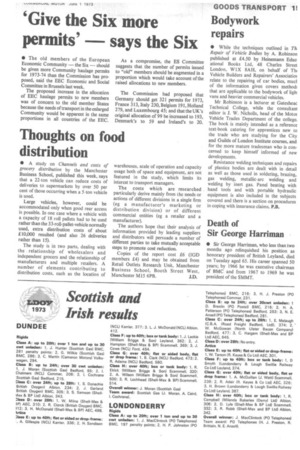Thoughts on food distribution
Page 17

If you've noticed an error in this article please click here to report it so we can fix it.
• A study on Channels and costs of grocery distribution by the Manchester Business School, published this week, says that a 22-ton vehicle can reduce costs of deliveries to supermarkets by over 50 per cent of those occurring when a 5-ton vehicle is used.
Large vehicles, however, could be accommodated only when good rear access is possible. In one case where a vehicle with a capacity of 18 roll pallets had to be used rather than the 33-roll-pallet-vehicle normally used, extra distribution costs of about £10,000 resulted (and also 26 deliveries rather than 15).
The study is in two parts, dealing with the relationship of wholesalers and independent grocers and the relationship of manufacturers and multiple retailers. A number of elements contributing to distribution costs, such as the location of warehouses, scale of operation and capacity usage both of space and equipment, are not featured in the study, which limits its interest to transport managers.
The costs which are researched particularly derive mainly from the needs or actions of different divisions in a single firm (eg a manufacturer's marketing or distribution division) or of different commercial entities (eg a retailer and a manufacturer).
The authors hope that their analysis of information provided by leading suppliers and distributors will persuade a number of different parties to take mutually acceptable steps to promote cost reduction.
Copies of the report cost £6 (IGD members £4) and may be obtained from Retail Outlets Research Unit, Manchester Business School, Booth Street West,
Manchester MI5 6PB. J.D.




































































































